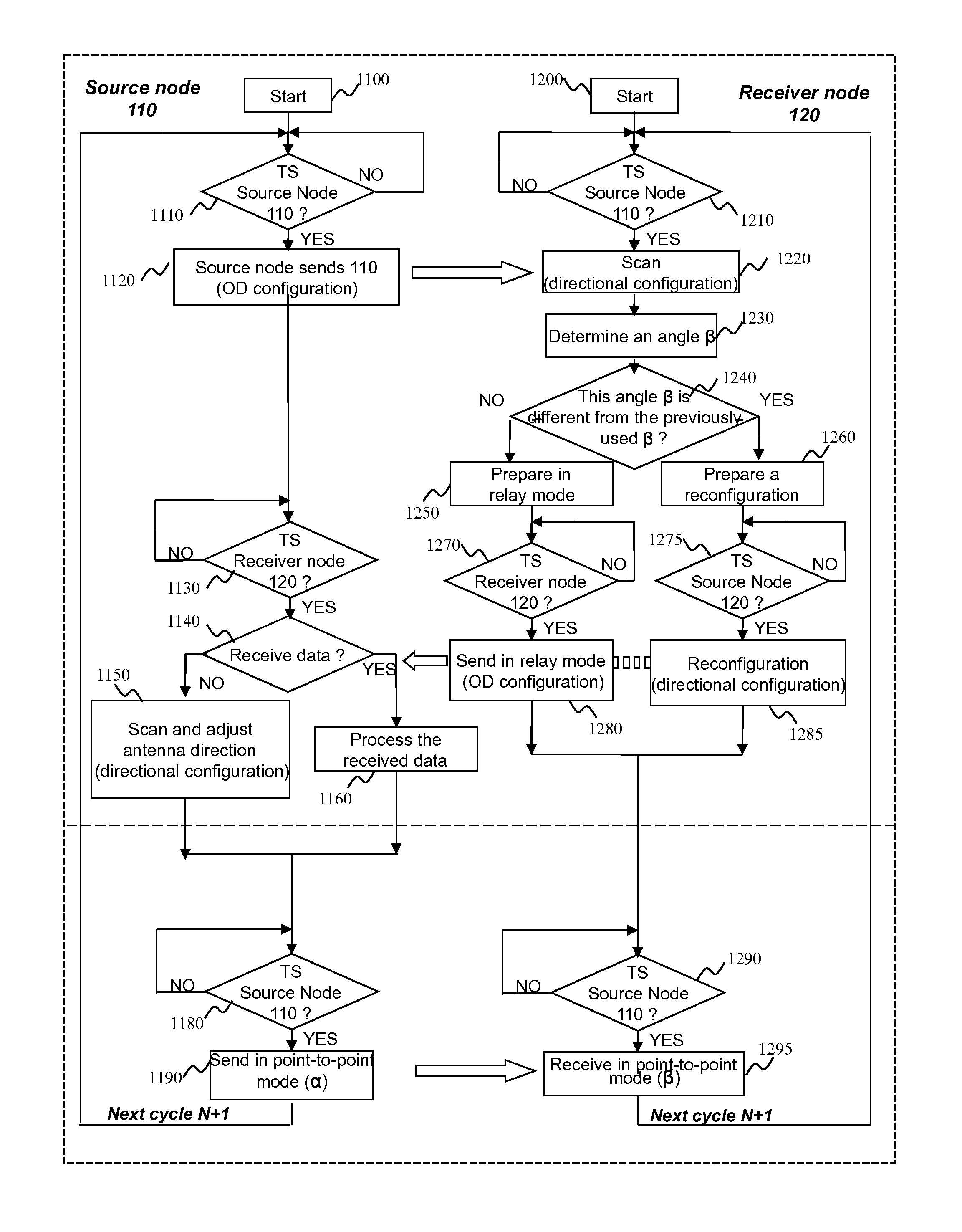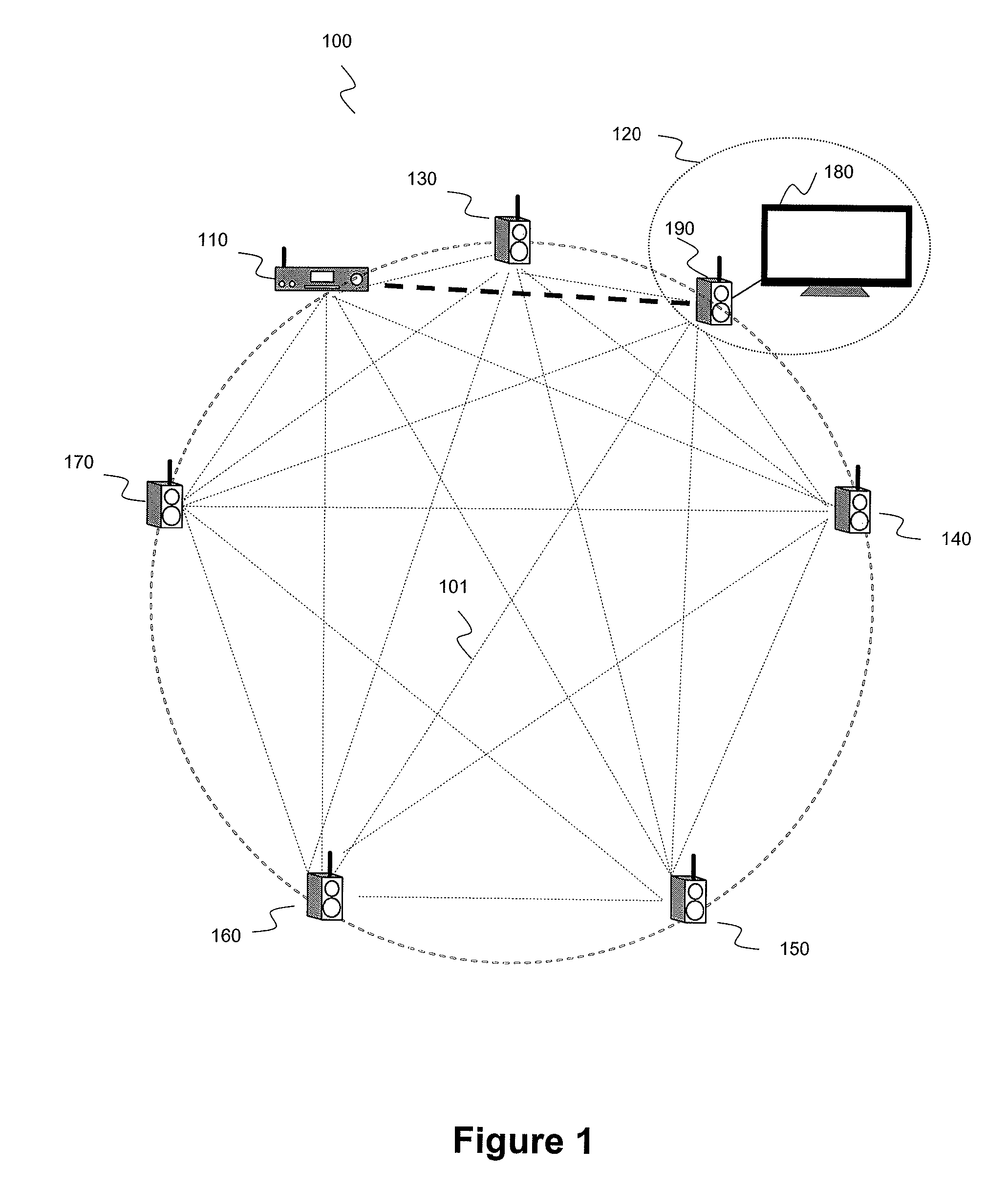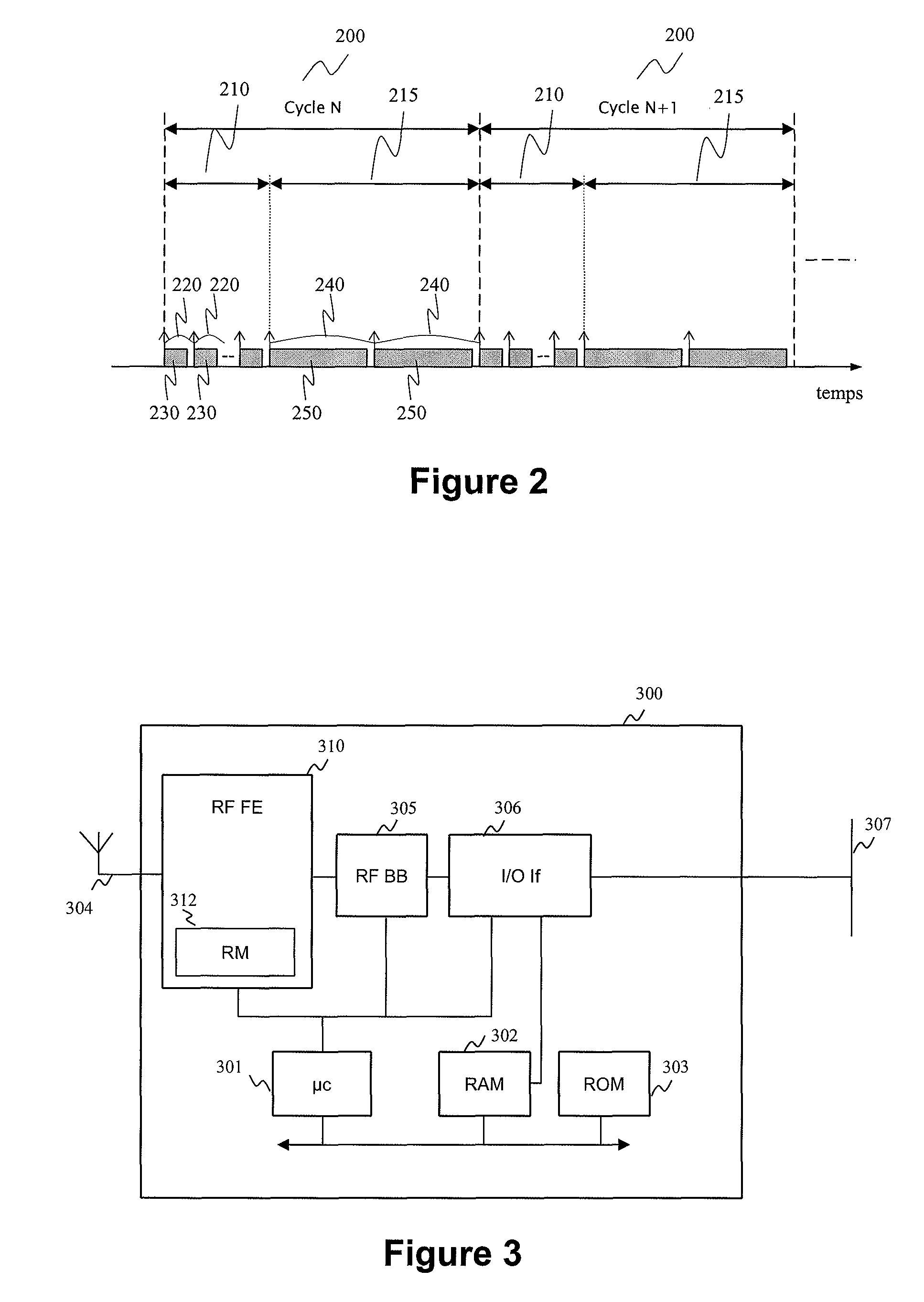Methods for configuring sender and receiver antennas, corresponding storage means and nodes
a technology for sending and receiving antennas, applied in the field of communication systems, can solve the problems of increasing the sensitivity of the antenna in reception, limiting the radio range of such systems to about ten meters, and reducing the sensitivity of the antenna in the reception field
- Summary
- Abstract
- Description
- Claims
- Application Information
AI Technical Summary
Benefits of technology
Problems solved by technology
Method used
Image
Examples
Embodiment Construction
[0145]In all the figures of the present document, the identical elements and steps are designated by a same numerical reference.
[0146]FIG. 1 is an example of a wireless communications network 100 in which the methods for configuring according to a particular embodiment compliant with the invention can be implemented.
[0147]More particularly, the network 100 of FIG. 1 illustrates a wireless (5.1 home cinema type) video and audio distribution network using millimeter waves about the 60 GHz frequency band. The network 100 comprises a source device 110 and a plurality of sender and receiver nodes 120, 130, 140, 150, 160 and 170, each node being capable of behaving alternately as a sender node and as a receiver node and having only one antenna for the transmission and reception of radio data signals. Furthermore, certain nodes may play the role of relay nodes, i.e. they retransmit on the network data that they have preliminarily received from another node. The nodes of the network 100 are...
PUM
 Login to View More
Login to View More Abstract
Description
Claims
Application Information
 Login to View More
Login to View More - R&D
- Intellectual Property
- Life Sciences
- Materials
- Tech Scout
- Unparalleled Data Quality
- Higher Quality Content
- 60% Fewer Hallucinations
Browse by: Latest US Patents, China's latest patents, Technical Efficacy Thesaurus, Application Domain, Technology Topic, Popular Technical Reports.
© 2025 PatSnap. All rights reserved.Legal|Privacy policy|Modern Slavery Act Transparency Statement|Sitemap|About US| Contact US: help@patsnap.com



